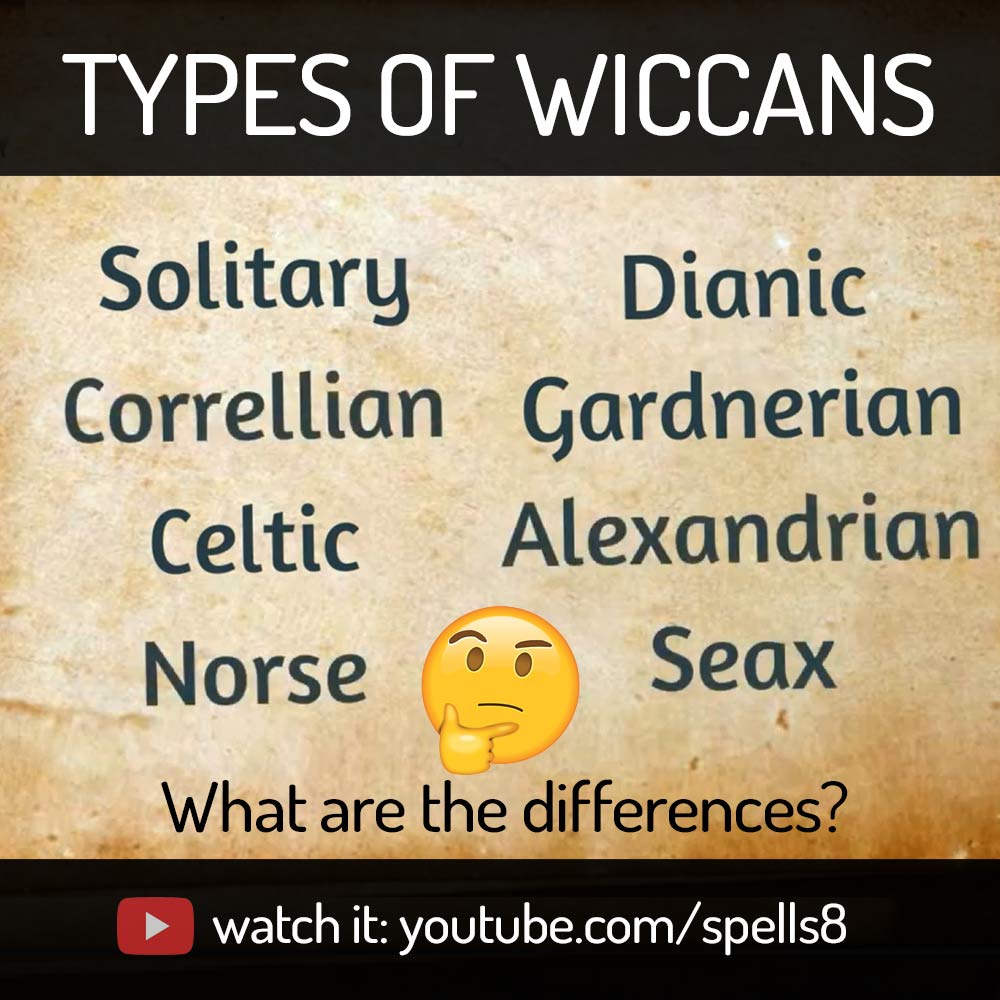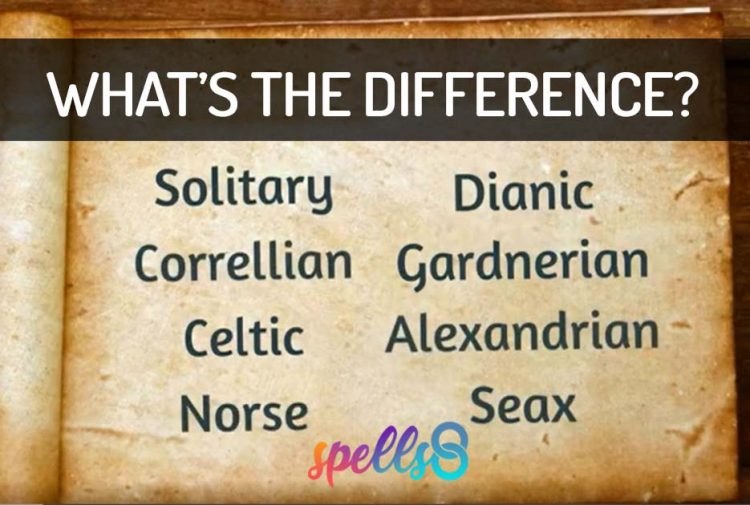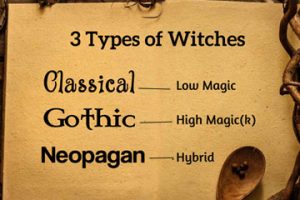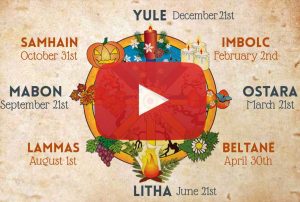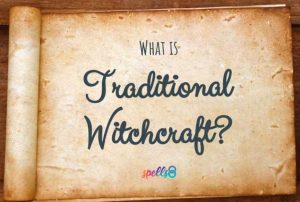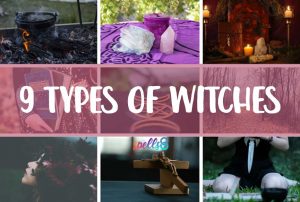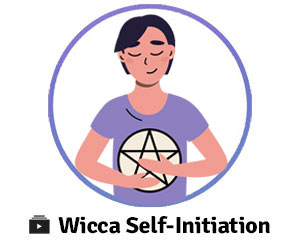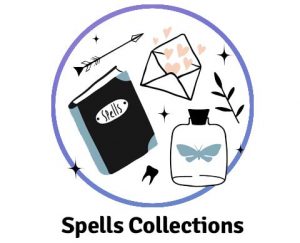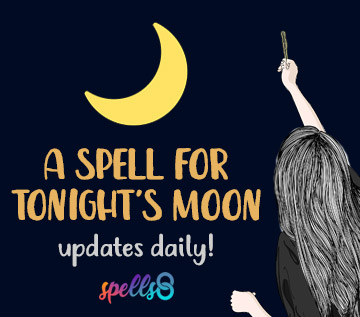From Traditional Witches to Dianic Witches — including Gardnerian, Alexandrian, Seax and more — this video covers most of the different types of Wiccan Witches you’ll find along your Pagan path ⛤
This lesson is part of the ‘Holistic Witch’ Eclectic Guide 🔮 a video series now available to all members of Spells8! Sign up here!
What are the different types of Wiccans?
- Gardnerian Witch
- Traditional Witch
- Alexandrian Witch
- Dianic Witch
- Seax-Wica Witch
- Correllian Witch
- Norse Witch
- Celtic and Druidic Witches
- Solitary Witch
Difference Between Wicca and Paganism
If you’re a total beginner, you may be wondering what’s the difference between Paganism, Witchcraft and Wicca. Watch this 7-minute video lesson to remove all doubts:
゚*✦*゚ ゜゚*✦*゚ ゜゚*✦*゚ ゜゚*✦*゚゜゚*✦ ゚*✦*゚
Watch Also: No-Nonsense Types of Witches
This 6-minute video will help you understand what are the 3 real types of witchcraft throughout history.
Different Types Of Wiccan Witches
At first glance, it may seem that a Witch is a Witch. But the further you go into learning about the Craft, the more you realize there are lots of different types of Witches. And since Wicca is an ever-changing religion that adapts to the practitioner, it is ever evolving to meld with the needs of its adherents.

New forms and paths continue to pop up and create new spiritual journeys within paganism. With so many possibilities, how do you know which type of practice is best for you?
Even if you have already chosen your path, it’s always a good idea to learn about other possibilities. And if you haven’t chosen a type of practice, here is a great list of Wiccan Witches that will help you begin thinking about which one is right for you.
While it can seem overwhelming at first, sometimes it’s a good idea to decide which ones do not fit, rather than trying to find which one does. This will help you narrow your search and over time, you will find the right fit.
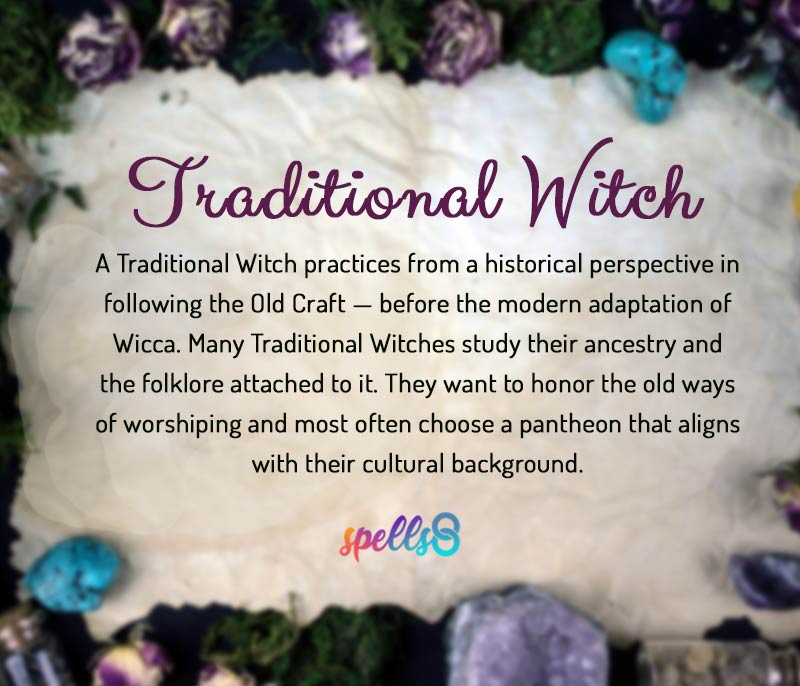
Gardnerian Witch
The father of Wicca, Gerald Gardner, developed this practice in Britain during the mid-20th century. From his original coven, Bricket Wood, he passed on his interpretation of Witchcraft. As an initiation tradition, only another Gardnerian coven can bring in a new practitioner. This is done in order to trace the lineage of practitioners back to the very first coven.
In this practice, covens have 13 members and is led by a High Priestess and High Priest. Gardenerians adhere to the story of the Horned God dying and being reborn each year as the Mother Goddess remains eternally alive. Their rituals are highly elaborate and many of the orthodox covens still practice ritual nudity. Gardnerian covens are quite secretive so it can be a bit difficult to figure out as a new practitioner.
The Wheel of the Year
▶️ Watch this free lesson to learn how the cycles of birth, death, and rebirth work in Gardnerian Wicca.
Traditional Witch
A Traditional Witch practices from a historical perspective in following the Old Craft that came before the modern adaptation of Wicca and its many branches. Many Traditional Witches study their ancestry and the folklore attached to it. They want to honor the old ways of worshiping and most often choose a pantheon that aligns with their cultural background.
What is Traditional Witchcraft?
▶️ A lesson for members of Spells8 that covers the differences between British Traditional Witchcraft, Traditional Wicca, and Traditional Witchcraft.
Alexandrian Witch
Alex and Maxine Sanders created the Alexandrian tradition as an off shoot of Gardner’s practice. While the two practices are similar in many ways, they are very different paths.
Alexandrian witches are initiated and organized around a High Priestess. The Alexandrian tradition focuses on the ancient archetypes of the Oak and Holly kings who battle and win then battle and lose to bring about the light and dark, warmth and cold. While not as secretive as their Gardnerian counterparts, Alexandrian Witches still place emphasis on tradition and following protocol.
Dianic Witch
Dianic Witches predominantly focus on feminism and the supremacy of the Goddess. As it grew out of the women’s movement in the United States, Dianic witches are attuned to the political and social oppression of women as well as the injustices they suffer within their gender.
The hierarchical structure is quite lax and fluid while allowing for growth along one’s own path. Originally created by Zsuzanna Budapest in the 1970s, any coven derived from the original lineage remains female only. However, more recent practitioners have created offshoots that do allow male practitioners.
Seax-Wica Witch
Raymond Buckland moved to New York from Britain and brought with him a version of Gardnerian Witchcraft. His practice adapts Gardnerian practice for an American culture. Within the practice of Seax-Wica, there is an emphasis on herbs and divination.
This tradition does not include oaths of secrecy, rigid hierarchical structures, or a Book of Shadows. There are no degrees so a democratic approach to coven leadership is established. Self-dedication and open mindedness abound within this practice.
Wicca Self-Initiation
▶️ Follow this video series to get started in your path without a coven. Ideal for Solitary and Eclectic Witches.
Correllian Witch
Founded in the late 20th century by Caroline High Correll, this practice initially focused on spiritual healing and herbalism. While seemingly more eclectic and universalist, this practice is quite widespread today.
What is Eclectic Wicca?
▶️ A lesson for members of Spells8 that covers the importance of religious tolerance & eclecticism in modern-day Witchcraft.
Norse Witch
Norse Witches honor the ancient practices of Scandinavia. While this is a new path within the Wiccan community, it is predominantly made up of practitioners who decide to work with this pantheon of deities.
There is no hierarchical structure or initiation rites. It is simply an infusion of Nordic traditions within a Wiccan practice. Practitioners weave their own practice with that of ancient Norse traditions in Sabbats and religious cosmology.
Celtic and Druidic Witches
Technically two very different traditions but current practitioners often blend both together. While next to nothing is really known about the Druids, within Celtic mythology there are many references to their practice. Practitioners often work with deities from Irish, Welsh, Gaulish, or Cornish mythology and often have a more metaphysical and shamanistic approach then traditional practitioners.
While there may or may not be a hierarchical structure, practitioners focus on what information has been preserved throughout time within this culture.
Celtic Pagan Prayers
▶️ Video devotional prayers to the deities in the Celtic Pantheon. Add them to your daily Wiccan practice.
Solitary Witch
Solitary Witches practice predominantly alone rather than with a coven. They learn about the Craft through books and online research where they develop their own style of Craft. While they may participate in circles, they do not adhere to any structure as many create their own set of practices drawn from a variety of sources.
Coven vs Solitary Practice
▶️ What are the pros and cons of being member of a Coven? Should you stay Solitary? Watch this free lesson to learn more!
In Summary
Remember, you don’t have to pick just one type of practice – blending and changing, adapting and searching is what Wicca is all about! ✨
Read Also
Video: From Aleister Crowley to Wicca: 4 Types of Paganism
For now, just know there are lots of possibilities when developing your tradition. You don’t need to pick one and stay with it for life. Just choose the one that feels right at this moment and keep an open mind that your own style and preferences will change and adapt over time as your own knowledge and practice of the craft changes and adapts over time.
There’s no shame in being a beginning and searching practitioner! Take as much knowledge as you can from others and develop the best path for you.
Keep learning! Check out more Online Courses here.
Tap to Pin it!
